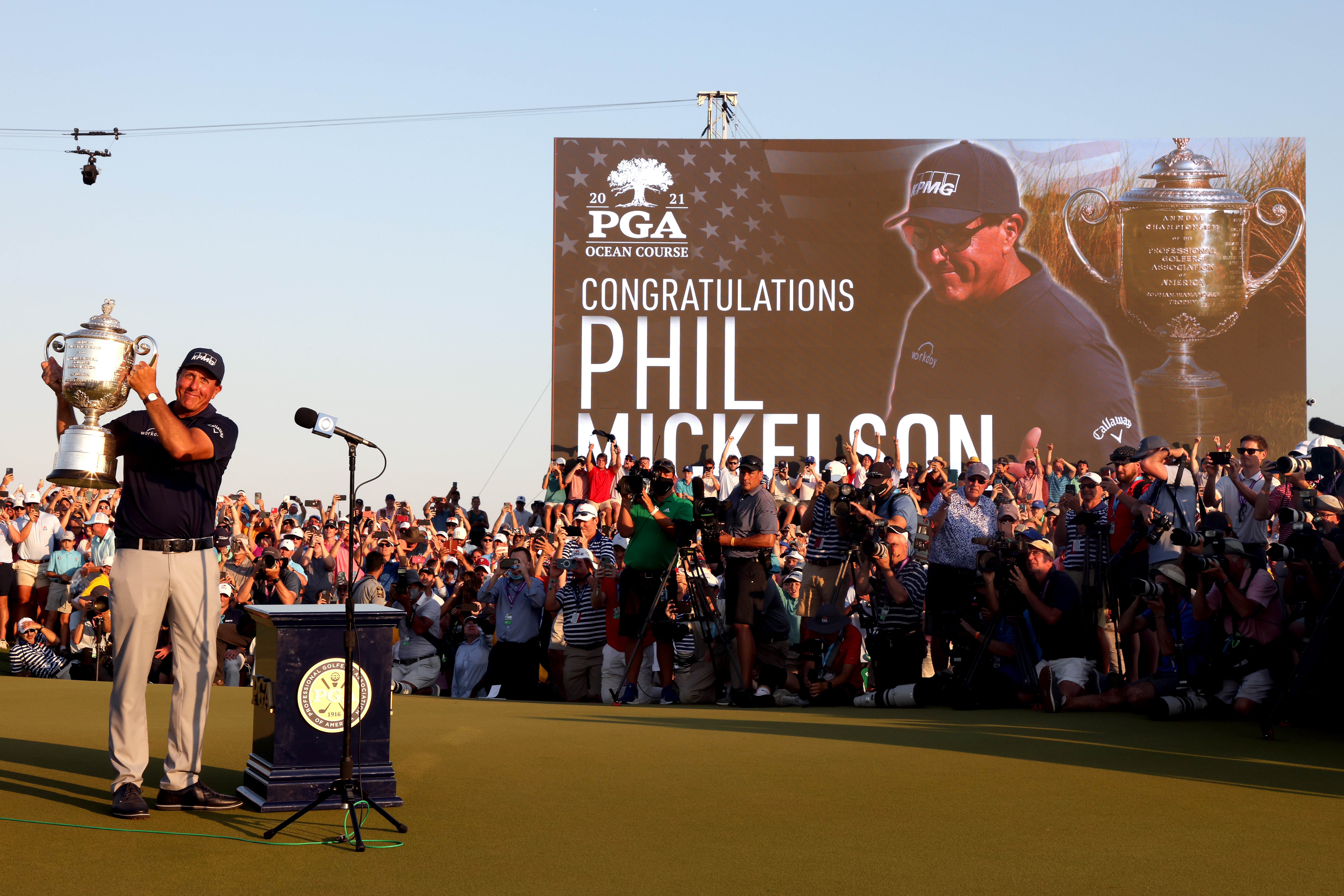KIAWAH ISLAND, S.C. – For superstitious types, it might have seemed ominous that Sunday was a good day for the two men who were spoilers when guys in their 50s previously led major championships entering the final round.
Padraig Harrington, only a few months shy of the half-century himself, shot 69 and finished T-4, while Stewart Cink carded two eagles in a 69 of his own. In long-ago Open Championships, Harrington and Cink ran down, respectively, Greg Norman and Tom Watson. Norman was 53 when he led by two at Royal Birkdale in ’08 and Watson almost 60 when he carried a one-stroke advantage the following year at Turnberry.
Considering the outcome in both instances, one would be forgiven for assuming that seniors leading majors are like dogs chasing cars—you admire the tenacity, but know it won’t end well. That was the undercurrent Sunday at The Ocean Course when Phil Mickelson, a month shy of his 51st birthday, took a one-stroke lead into the final round of the PGA Championship, achingly close to a sixth major win and the distinction of being the oldest ever (by three years) to claim one of the game’s most important titles.
Yet what separated Mickelson from Norman and Watson was frailty. They had too much of it to outlast their pursuers, he had too little of it to encourage his. Mickelson’s paperwork might say 50, but his swing, his attitude and his confidence belie the years.
It’s no coincidence that all three majors in which the 54-hole leaders had AARP cards were played on golf courses that reward the attributes that come with age. The Ocean Course isn’t a links in the literal design sense, but the demands it makes of players are identical to those celebrated courses just beyond the eastern horizon: patience, acceptance, stoicism, resilience.

Phil Mickelson and caddie Tim Mickelson walks though the crowd of fans on the 18th hole during the final round of the PGA Championship golf tournament. Photo by Geoff Burke-USA TODAY Sports
Mickelson hasn’t always exhibited the first of those traits, but the gut punches he has absorbed over the years are testament to his familiarity with the other three.
On Sunday, I asked Harrington if he approached that final round at Birkdale thinking Norman’s age, and the knowledge that it was the last shot in his chamber, made him more fragile. He said that he tried to block out the feel-good story being peddled of Greg on his honeymoon with Chris Evert and rediscovering the elixir of youth. “I just did not want to buy into that sympathy, you know?”
It’s unlikely Mickelson’s chasers on Sunday were susceptible to sympathy. He is as polarizing as he is popular, whether in living rooms or locker rooms. But Harrington continued with an astute observation about the inflection point with pressure, and how it would serve rather than unsettle the old veteran.
“I think older players struggle until they get under pressure. It will help Phil that the tension is there,” he said. “It helps him focus and it helps him compete when he knows that the other guys are going to be feeling it, too.”
“Isn’t there a tipping point of pressure that you can only get to so much and after that it’s kind of just the same?” he added. “Anybody in the last group going out in a major is going to feel it, or the last couple of groups. Anybody who really thinks they can win on a Sunday is going to be feeling that pressure. I’d say Phil is full to capacity, but that’s where he likes to live.”
And so it proved that nerves are not the exclusive burden of old men on major Sundays.
Koepka, his closest pursuer starting the day, faded to a dismal 74 and finished two back. Louis Oosthuizen found his customary Sunday gear: neutral. And whatever charges that were mounted came from too far behind to have an impact.
Koepka will chalk his day up to poor play rather than admit to nerves. But for all his swagger, he is not immune to jitters. At the ’19 PGA Championship at Bethpage Black, he frittered a seven-shot lead down to one but survived when Dustin Johnson wobbled. Koepka is less than two months removed from knee surgery and six months from the timeline his surgeon gave him to be healthy. In that context, he ought to leave Kiawah Island feeling bullish about his performance. But he won’t. It’s not in him to look at T-2 as anything less than failure. It’s why he owns four of these things himself.
Mickelson’s six majors—three Masters, two PGAs and an improbable Open Championship at age 43—are monuments to his brilliance and longevity, but the accounting of those that got away is relevant too. His 10 seconds and 6 thirds are evidence of the resilience that has kept Mickelson fighting at the front long after his contemporaries moved on to trade war stories in Champions tour pro-ams and TV booths.
The 103rd PGA Championship was one to be navigated rather than overpowered, so it should be no surprise that the most cunning of them all was the last man standing. Nor should we assume it was his last stand. Because you can be assured that Mickelson doesn’t think so.

